Standard has finally settled down, and three top decks have emerged: Gruul, Rakdos Kroxa, and Rogues. While the format is very diverse and other decks have a chance to win events, these three decks have the biggest targets on their backs. Today, we’re going to go over these three decks, including their biggest strengths and weaknesses, so you can have a plan to beat them on the Arena ladder.
GRUUL
Standard doesn’t have many good aggressive decks, and I would go as far as to say that Gruul is the only good one right now. Most decks are playing a fair amount of main-deck removal, but any of Gruul’s threats will be lights out if they can pick up an Embercleave. If you’re playing against Gruul, you’ll often be priced into trying to keep the board as stable as you can to prevent the ’Cleave from coming out. But what really sets Gruul apart isn’t just its superior proactive game plan — it’s Gruul’s ability to generate more card advantage than most other decks. Cards like Edgewall Innkeeper, The Great Henge, and Vivien, Monster’s Advocate allow Gruul to keep the cards flowing until they eventually pull ahead.
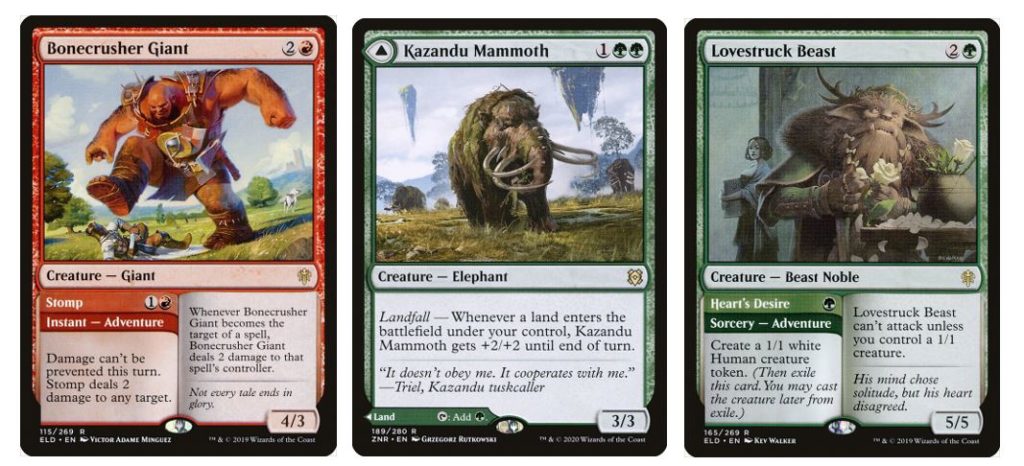
However, one of Gruul’s weak points is the glut of three-drops it plays. While all of them also fit in other places on the curve — a la Bonecrusher Giant, Kazandu Mammoth and Lovestruck Beast — turn three is a focal point whenever you play against Gruul. Sticking a creature on turn three is especially important for Gruul if they already have another creature in play, so they can set up for a turn four Embercleave. With that in mind, you should have a plan to interact on turn three and on each subsequent turn.

One of the best tools to break up Gruul’s plans is Doom Foretold. Doom is very hard for the Gruul decks to interact with, and it’s a repeatable way to answer their creatures. It also does a nice job of answering the more grindy elements of the Gruul deck, such as The Great Henge.
Gruul can get underneath Doom Foretold, so you should aim to back it up with other forms of disruption. It’s not a foolproof plan, but definitely a thorn in their side.
ROGUES
Rogues is another deck that has established itself as a mainstay of the format. Rogues leans toward being a control deck, but it uses the Rogues package of Merfolk Windrobber, Thieves’ Guild Enforcer, and Soaring Thought-Thief to enable powerful payoffs like Drown in the Loch, Lullmage’s Domination, and Into the Story. The Rogue package also enables you to play a “fish” game in some matches, where you get a couple Rogues down early and spend the rest of the game protecting them. This allows the deck to play a couple different game plans and to switch it up as the game progresses.
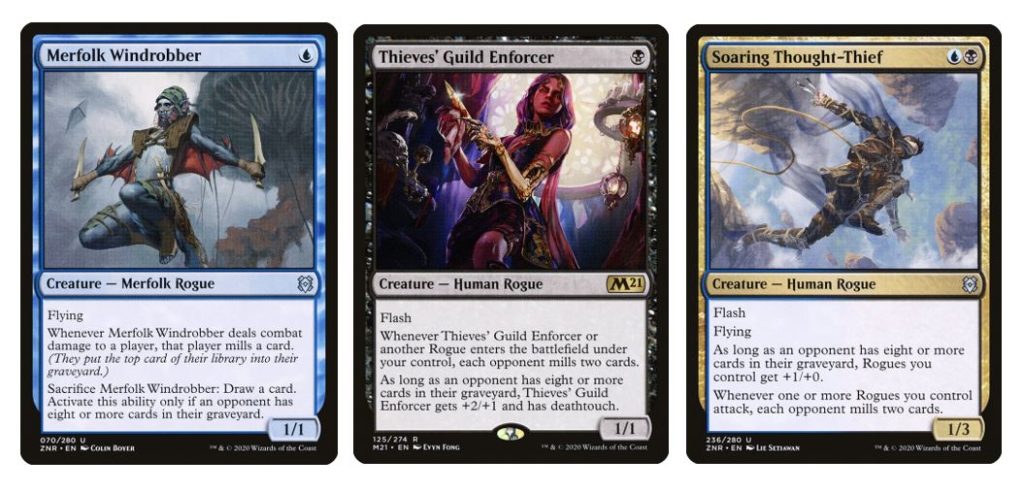
As the opponent, you need to be able to play to the specific draw Rogues has and realize when something might not matter that normally would. For example, it might seem like your opponent is trying to mill you out with an early Ruin Crab into a couple early Fabled Passages, when in reality, they’re trying to rush out Into the Story.

The most obvious way to beat Rogues is with escape cards. Glimpse of Freedom, Ox of Agonas, Cling to Dust, and Kroxa are all great ways to keep your graveyard small in the early game and punish their mill plan. Sometimes, resolving Kroxa and other escape cards early will just win you the game, but you’ll often need other things going on, as Rogues will try to overload your graveyard and make it very challenging to empty it.
There’s one particular play pattern I’ve noticed that’s often difficult for Rogues to beat. If you can get on the board and start pressuring their life total early, they will have to respond and try to gain back control of the board. When your opponent starts using their mana to try to answer the board, it’s best to respond with a card that’s hard to interact with that will accrue advantage over the game. One of the best examples of this is Klothys, God of Destiny, which will drain your opponent out over the course of the game.
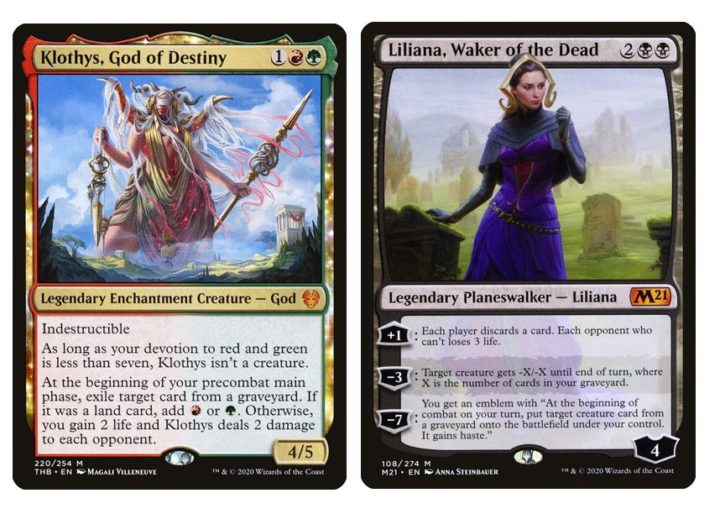
Even if you aren’t playing Gruul, there are several other ways you can apply this principle in your games. Maybe you’re playing Rakdos and you want to stick a Liliana, Waker of the Dead. Spend your first few turns playing cards like Mire Triton, Skyclave Shade, and Tymaret Calls the Dead, and you’ll be applying ample pressure. The goal is to force your opponent to feel priced into answering the board, only to come face to face with a card they can’t answer. Getting your Rogues opponent to play your game instead of theirs is one of the most powerful tactics you can use.
RAKDOS KROXA
The Kroxa decks in Standard are your quintessential midrange decks: they try to run opponents out of resources over the early game, then win with the leftovers. The Red-Black deck also plays a graveyard resource game, using cards like Mire Triton and Tymaret Calls the Dead to fuel Ox of Agonas and Kroxa.
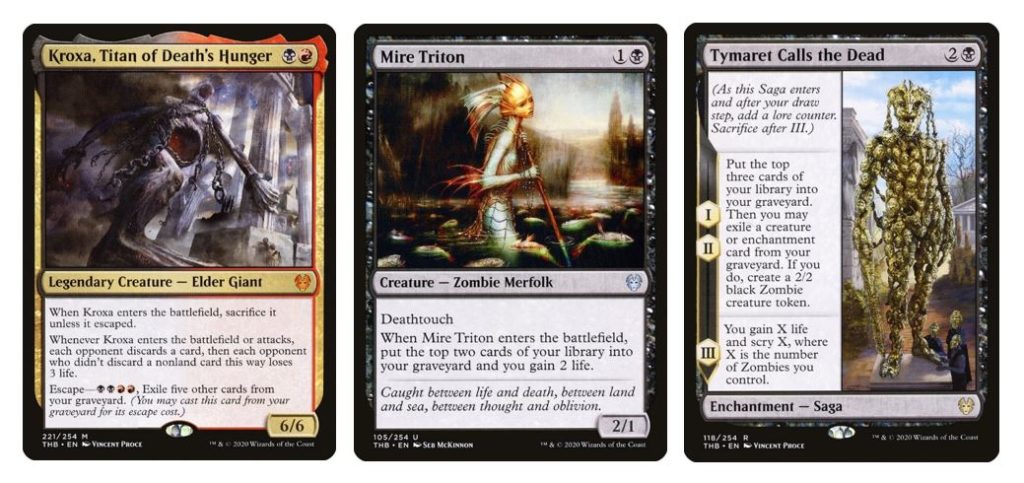
Kroxa decks have a wide variety of tools that they can bring to any given weekend, allowing them to adapt to the metagame quickly and easily. Kroxa players typically tune their builds to target one or two decks, but the format is so diverse that this normally leaves a hole in their game plan. When Yorion was the deck to beat, you needed to load up on discard spells, but with Gruul on the rise and Yorion on the downswing, there are less incentives to do that.
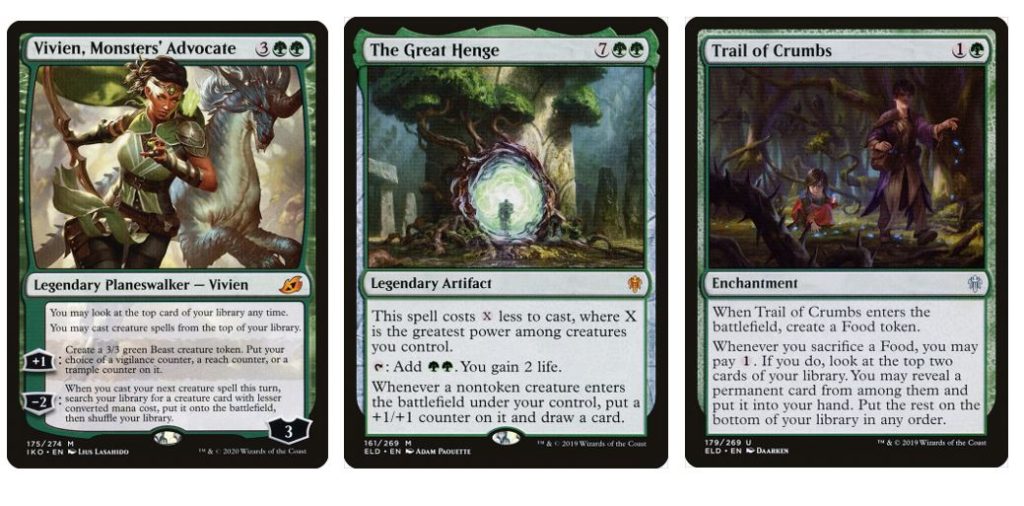
So, how can you exploit and attack this ever-changing deck? The best strategy is to go over the top. We’ve seen decks like Temur Ramp completely destroy the Rakdos decks by quickly playing a Ugin and invalidating all their other plays for the rest of the game. But there are more subtle and less “all-in” ways to do this. Vivien, Monsters’ Advocate allows you to overwhelm your opponent with threats while providing a source of card advantage. The Great Henge allows you to quickly move through your deck while also buffing up your creatures slightly. Yorion decks use a lot of these cards already, as well as cards like Trail of Crumbs which make it very hard for your opponents to play a long, drawn-out game. If you’re trying to beat Kroxa, try finding ways to make their “one-for-one” game plan ineffective.
CONCLUSION
Every deck in Standard has a weakness. One of the best ways to gain an edge in Magic is to make your cards line up as well as possible against your opponents’. If you can pinpoint your opponents’ weaknesses and tune your own deck effectively, you’ll have some great results on the ladder and in your next tournament. As Sun Tzu once said, “It is said that if you know your enemies and know yourself, you will not be defeated in a hundred battles.”
Have you been crushing Standard this week? Are you excited to battle in this weekend’s events? Tweet @masoneclark and @card_kingdom and let us know what you’re playing with.

Mason Clark is a grinder in every corner of the game who has played at the pro level and on the SCG Tour with Team Nova. Whether he’s competing in Standard, Historic or Modern, Mason plays with one goal in mind: to be a better player than he was the day before. Check out his podcast, Constructed Criticism, and catch his streams on Twitch.

